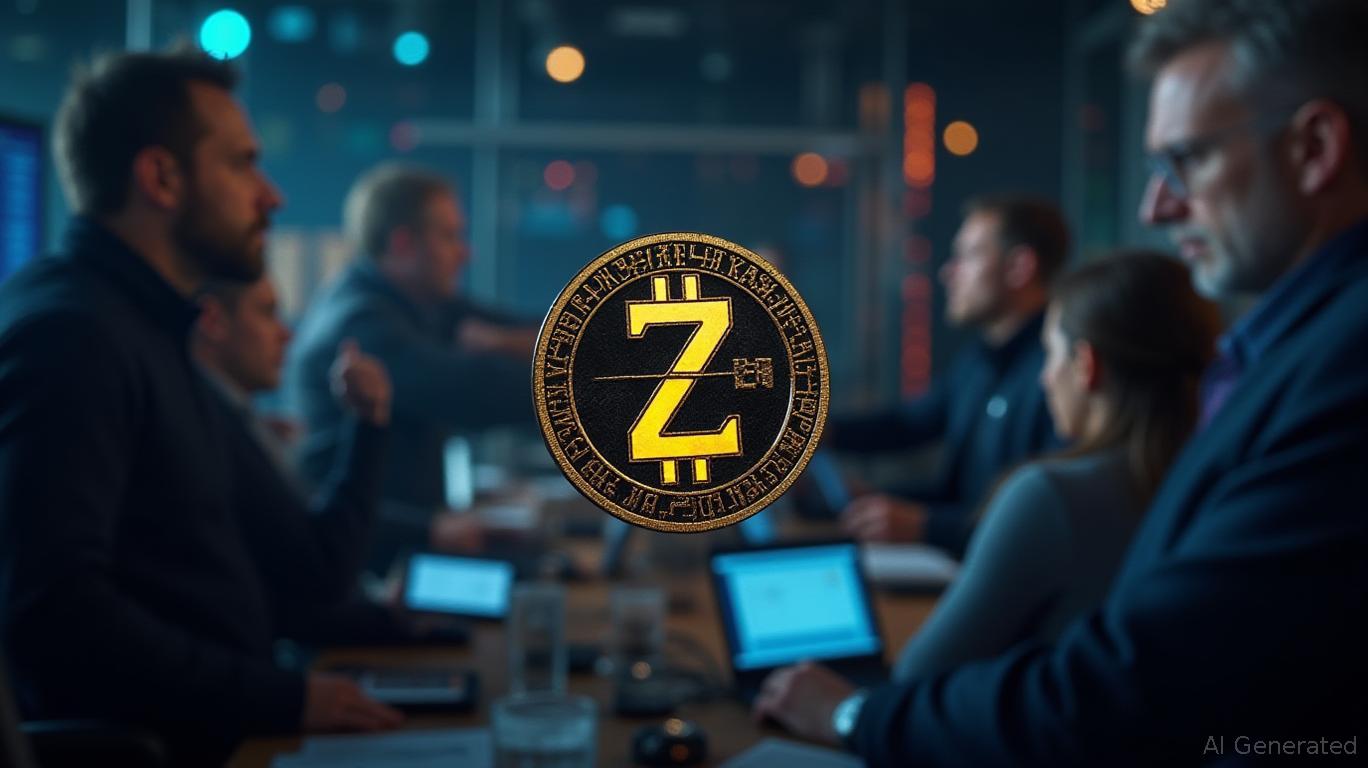Stablecoins Lead Tokenized Deposits in Security and Integration Capabilities
- Experts argue stablecoins outperform tokenized deposits in safety, liquidity, and cross-chain interoperability, per Columbia Business School and Markets.com analyses. - Tokenized real-world assets (RWA) market could hit $2 trillion by 2028, driven by stablecoin liquidity and DeFi integration, Standard Chartered forecasts. - Banks resist yield-bearing stablecoins fearing market share loss, while U.S. regulatory clarity remains critical for sector growth, reports note. - Institutional adoption accelerates
The competition between stablecoins and tokenized bank deposits is heating up, with many analysts asserting that stablecoins have a clear advantage in terms of security, usability, and widespread use. Omid Malekan, who teaches at Columbia Business School, argues that stablecoins backed one-to-one by cash or short-term assets are fundamentally more secure than tokenized deposits issued by banks using fractional reserves. “Stablecoins are naturally better equipped to handle liquidity challenges,” Malekan explained, highlighting that tokenized deposits are often limited by KYC requirements and lack broad compatibility, as noted in a

Stablecoins also excel in composability, allowing them to be easily integrated throughout the crypto landscape and within decentralized applications (dApps). In contrast to tokenized deposits, which are typically restricted to closed systems, stablecoins support international payments, yield-generating protocols, and interactions with DeFi platforms, according to a
At the same time, the market for tokenized real-world assets (RWA) is expected to reach $2 trillion by 2028, based on a
Stablecoins are at the heart of this evolution. With a total market value surpassing $300 billion, they serve as the main source of liquidity for tokenized assets, streamlining on-chain transactions and yield opportunities, according to Standard Chartered. Tether’s
Yet, there are still hurdles to overcome. Banks and other financial players are pushing back against stablecoins that pay interest, concerned about losing their share of the market. The banking sector has actively opposed yield-generating stablecoins, which could threaten traditional interest-based business models, as highlighted in the Markets.com article. Regulatory ambiguity is another significant barrier. Standard Chartered cautions that without comprehensive U.S. crypto regulations before the 2026 midterms, progress could be delayed, the report adds.
Even so, institutional interest is growing rapidly. Coinbase’s recent $2 billion offer for stablecoin infrastructure provider BVNK highlights the strategic importance of the sector, while BlackRock and other major players are exploring funds backed by stablecoins, according to a
As the financial industry adapts to these changes, the decision between stablecoins and tokenized deposits will depend on practical use and regulatory developments. At present, stablecoins seem to be leading, thanks to their flexibility, liquidity, and growing institutional support.
Disclaimer: The content of this article solely reflects the author's opinion and does not represent the platform in any capacity. This article is not intended to serve as a reference for making investment decisions.
You may also like
NEAR's Reduced Inflation: Sensible Adjustment or Weakening of Governance?
- NEAR Protocol slashed annual token inflation to 2.4% from 5%, bypassing a failed community vote and sparking governance debates. - The October 30 upgrade reduces new token issuance by 60 million yearly, lowers staking yields to 4.5%, and prioritizes curbing dilution. - Critics, including staking firm Chorus One, accuse the core team of undermining decentralized governance, as NEAR’s price fell 8% post-announcement. - The move mirrors strategies by Solana and Polkadot but highlights tensions between econo

"Potential for Increased Volatility as Eigen Focuses on Expanding Its Ecosystem Rather Than Token Offerings"
- Eigen Foundation clarifies EIGEN token transfers from treasury are for ecosystem grants, partnerships, and liquidity, not team unlocks or sales. - Market faces $653M+ in token unlocks (Oct-Nov 27), led by SUI ($119M) and EIGEN ($43.8M), raising volatility risks for smaller projects like GRASS and SIGN. - Analysts warn high-unlock projects face sharper price swings, contrasting Eigen's governance stability with broader market uncertainties over liquidity absorption. - Rovaren Token (RVN) introduces AI-pow

Zcash Sets New Standard for Crypto Privacy with $412 Rally and Zero-Knowledge Enhancements
- Zcash (ZEC) surged to a $412 seven-year high, driven by privacy demand, ZK upgrades, and market shifts toward zero-knowledge tech. - ZEC's $6.8B market cap now surpasses Monero and Shiba Inu, fueled by 400% October gains and 4.1M shielded tokens on Orchard protocol. - Electric Coin Co. unveiled Q4 2025 roadmap with Zashi wallet enhancements, P2SH multisig security, and Solana integrations to boost privacy usability. - Analysts highlight Zcash's optional transparency model as a compliance advantage over f

Investors Turn to Blockchain as Meme Coins Struggle During Market Fluctuations
- Meme coins like SPX6900 face waning momentum as investors shift to blockchain projects like NB HASH, which integrates AI and decentralized infrastructure. - Fed Chair Powell's cautious stance on rate cuts (70% December cut probability) dampened tech stocks, while NatWest and SERES Group boosted earnings amid cost-cutting and EV growth. - Leidos and Summit Hotel Properties raised dividends, reflecting corporate strategies to balance shareholder returns with reinvestment amid market volatility. - Bitcoin's
